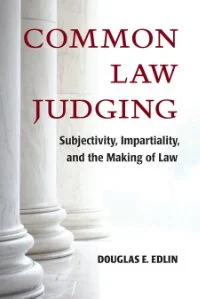By Malcolm M. Feeley
n his important article, Criminal Justice, Inc., Professor John Rappaport identifies the establishment of a new and novel institution: a private company retained by retail stores to dispose of cases involving shoplifting claims. Still in its infancy, this new development has spawned two private for-profit, specialist companies since 2010: the Corrective Education Company (CEC) and Turning Point Justice CEC alone handles thousands of shoplifting cases annually,
and if some legal technicalities are overcome, these companies may be handling significantly more in the coming years.
Both companies have the same business model, which Rappaport calls “Criminal Justice, Inc.” (CJ Inc.): Store security guards apprehend shoplifters, but instead of handling matters themselves or calling the police, the guards determine program eligibility according to strictly defined criteria and inform those eligible that they will be contacted by representatives of the CJ Inc. companies.In the subsequent call, CJ Inc. promises that the store will not call the police in exchange for a “tuition” payment to enroll in an online class on how to avoid crime.
Retailers, which include large national chains with aggregate annual sales in the billions of dollars, pay nothing for this service.
This new development, Rappaport tells us, may transform the way shoplifting is handled. In this Response, I place CJ Inc. in a broader context, point to other similar developments earlier and elsewhere, and imagine the future of criminal adjudication in a world of “CJ Incs.” After highlighting Rappaport’s central findings, I examine the model from two perspectives. First, I consider CJ Inc. from a historical and comparative perspective to show it is not so new: This sort of self-help is a time-honored practice found across all stratified societies. Second, I explore this phenomenon in light of practices common in many segmented societies. Here, too, there is a substantial body of research on legal pluralism, which shows that alternatives to governmental systems of social control are common, even in criminal law matters, and even in modern societies. The introduction of CJ Inc. into contemporary American stores is one more instance of creative adaptation within segmented institutions. The examination of social control in stratified and segmented societies reveals a great deal about the nature and the limits of the criminal law, the limits of the state’s ostensible monopoly on the enforcement of criminal law, and the possible future of CJ Inc. and other related developments.
In this Response, I show that Rappaport has identified something of a paradigm case in the amalgamation of stratified and segmented structures that facilitate opportunities for expanded forms of private criminal justice administration. If I am correct, the implications for the expansion of CJ Inc. are enormous. Part I examines the social dimension of shoplifting and provides a thumbnail sketch of retail justice. Part II examines self-help in stratified and segmented societies and explores the implications of treating department stores as both stratified and segmented institutions. Part III identifies other stratified or segmented settings and explores the nature of existing CJ Inc.-like institutions and others that may emerge. The list is long, suggesting that CJ Inc. has a bright future. The conclusion addresses some implications stemming from the likely development of CJ Inc., especially as it affects both public law enforcement and the expansion of private adjudication in criminal law.
Columbia Law Review Online, Vol. 119, March 2019





















